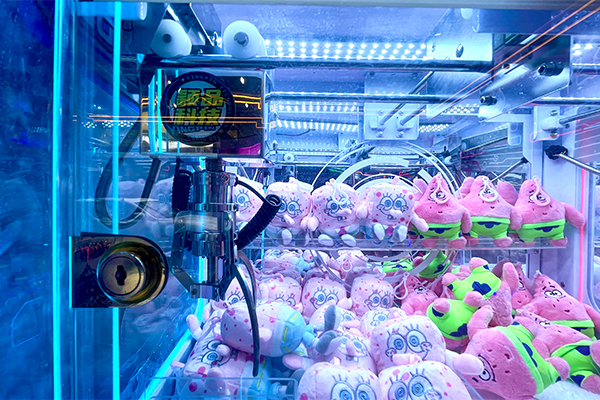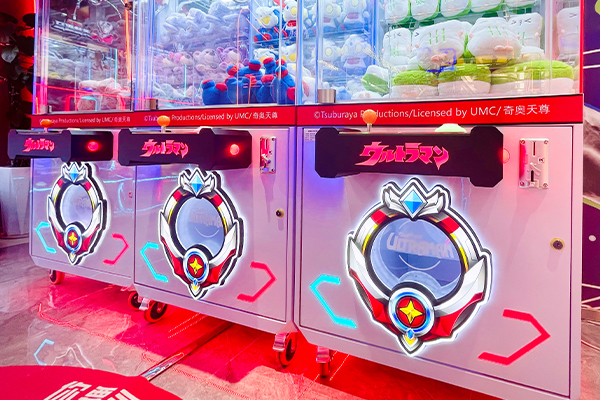Prize Redemption System: A Complete Guide
What Is a Prize Redemption System?

How Does a Prize Redemption System Work?

Benefits of Implementing a Prize Redemption System
Types of Prize Redemption Systems

Conclusion
FAQs

YPfuns to Showcase Innovative Claw Machines at IAAPA Expo 2025 Orlando

How to Get a Toy from a Claw Machine: Proven Tips

8 Fun Facts About Claw Machines: The Complete Guide

10 Custom Claw Mahcine Business Niches in 2025

Comprehensive Fun Zone Claw Machine Manual: Setup, Operation, and Maintenance
Product
If there are some problem of the quality,what will you do?
There is no one to ask any questions, but if the inner program has something wrong because of overuse, we will analyse where it is wrong very carefully. If that is indeed our quality`s problem, please don`t worry. We will compensate for the contact, and our team will still serve you with sincerity.
how to win in a claw machine every time?
Claw machines are designed to be fun and challenging, not to give prizes away every time. However, there are some strategies that can increase your chances of winning:
-
Pick your target wisely: Look for prizes that are light, not awkwardly shaped, and are positioned near the front or edge of the machine, where the claw can easily grab them. Avoid prizes that are stuck under or behind others.
-
Observe the claw's strength: Watch a few practice rounds to see how strongly the claw grips and how it moves. Some claws are weak and may not be able to lift heavier prizes.
-
Master the claw movement: Many claw machines have a delayed movement, so you may need to time your button presses carefully. There are also claw machines with a joystick control, which allows for more precise movement.
-
Try the "double tap" technique: This involves quickly pressing the claw button twice to make the claw close slightly before grabbing the prize. This can be helpful for lightweight prizes, but be careful not to overdo it, or the claw may not close at all.
-
Look for rigged machines: Some claw machines may loosen their grip after a certain number of tries. If you see this happening, it's best to move on to another machine.
-
Know when to walk away: Claw machines are a game of chance and skill. Set a budget for yourself and stick to it. Don't get discouraged if you don't win right away.
Remember, even with these tips, winning at a claw machine every time isn't guaranteed. But by following these strategies, you can increase your chances of walking away with a prize.
What is the brand? where is it produced?
Our brand is named YPFuns. Our calw machine products are produced in Panyu, Guangzhou, China.
Customization
What's the guarantee?
24 Hours Online and After-Sales Service.
When problems happen, our service team will help you to check what's the reason exactly step by step; if that's the software problem, we would remote and solve it with customers by Team Viewer; if that's the spare parts problem, we will send the replaceable part to customers by DHL or other fast parcels and teach customers how to replace it.
We're offering an 18-month super warranty; please check details below:
1. The warranty period is 18 months, PROMISE.
2. During the warranty period, if parts are damaged and need to be repaired (artificial damages and easy-broken parts are not included), the customer no need to send them back first and wait after repairing; instead, we will send the replaceable part to the customer by DHL or other fast parcels; no need to wait and save time; FAST.
3. Both spare parts and parcel freight to the customer side are free, BOTH FREE.
4. We provide maintenance for the whole life!
What's minimum order quantity and how long could ship?
As normal, 1–10 sets for different items; please contact us for more information.
We will finish claw machines in 7 days after receiving the deposit.
About payment
We can provide bank letters of credit, and transactions will be protected by international law.
You may also like

Hardware and Acrylic YP-OT1003 Otaku Diary 2 Claw Machine (Pink and Blue) wholesale factory

YP-OT1002 Hardware and Acrylic Otaku Diary 2 Claw machine wholesale factory

Hardware and Acrylic YP-OT1006 Otaku Diary Single Prize Cut Machine wholesale factory

Hardware and Acrylic YP-CA3002 Crazy Party Claw Machine wholesale factory
CONNECT WITH EASE
Have any questions or queries about our products? Please leave us a message here and our team will get back to you promptly.
Your inquiries, ideas, and collaboration opportunities are just a click away. Let's start the conversation.
* Rest assured that your privacy is important to us, and all information provided will be handled with the utmost confidentiality.
Copyright © 2024 YPFUNS All Rights Reserved. Designed by gooeyun









YPFuns Global
YPFuns Global
YPFUNS Global
YPFUNS Claw Machine